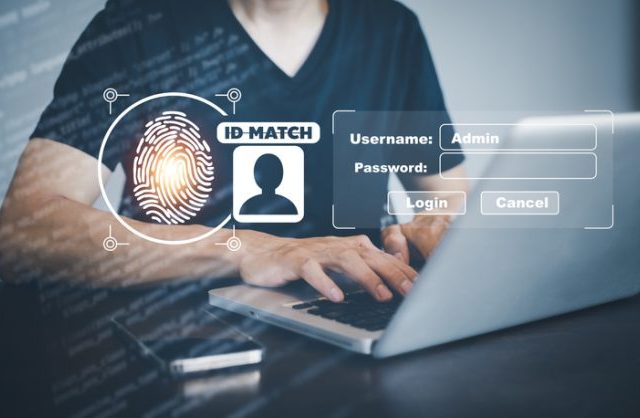The pursuit of impeccable identity verification is more pressing than ever. The quest for the best ID verification software has intensified as businesses and organizations seek fail-safe methods to authenticate user identities securely.
This article begins a detailed exploration, unraveling what underpins the effectiveness and dependability of the best ID verification software available. Let’s get stuck in!
Document Authentication Mastery
At the core of top-tier ID verification software lies an intricate mastery of document authentication protocols, which is one of the best practices. These cutting-edge systems meticulously scrutinize various identity documents, such as passports, driver’s licenses, and national IDs, employing advanced algorithms to discern anomalies.
The software’s prowess lies in its ability to detect alterations or forgeries, ensuring that only authentic, unaltered documents are accepted. This level of scrutiny forms the bedrock of a robust verification process, setting a high standard for thwarting identity fraud.
Delving into document authentication reveals a landscape where the best ID verification software not only verifies the legitimacy of the presented documents but also employs dynamic verification methods. These methods adapt to evolving document security features, staying one step ahead of counterfeiters.
Biometric Fusion
The integration of biometric authentication stands as a testament to the commitment of the best ID verification software in fortifying security. Biometrics, encompassing fingerprint scans, facial recognition, and other unique physical markers, offer an additional layer of protection, making it one of the ideal practices.
Beyond merely verifying documents, this technology creates a distinctive identifier for each user, significantly enhancing security protocols. The user-centric approach is evident in the seamless and user-friendly experience, where individuals effortlessly prove their identity through biometric markers.
A key advantage of biometric integration lies in its unyielding reliability for sensitive transactions. Unlike traditional methods that rely on passwords or PINs, biometric data is unique to each individual and impossible to replicate.
This not only boosts security but also simplifies the user experience, aligning with the best ID verification software’s commitment to a frictionless yet highly secure identity verification process.
The fusion of biometrics into the authentication framework marks a paradigm shift, heralding an era where personal identification is as unique and irreplaceable as the individual it represents.
Real-time Assurance and the Battle Against Spoofing
Time is of the essence. The best ID verification software addresses this imperative through real-time verification processes. The immediacy of these checks ensures swift confirmation of user identities, expediting user onboarding processes and heightening the overall user experience.
Real-time verification is a practice which not only enhances efficiency but also serves as a potent deterrent against fraudulent activities, providing an added layer of protection. In the ongoing fight against identity spoofing, the best ID verification software deploys sophisticated anti-spoofing measures.
Liveness detection, a key component of these measures, ensures that the verification process involves a living, present individual rather than a manipulated or static representation. This proactive stance significantly reduces the risk of fraudulent attempts, safeguarding the integrity of the verification process.
How does ID verification software contribute to fraud prevention?
ID verification software is a linchpin in the prevention of fraud.
Through meticulous document authentication, dynamic adaptation to evolving security features, and real-time verification, it creates a formidable defense against identity theft and fraudulent activities.
This multi-layered practice ensures a robust shield against sophisticated attempts to deceive the system.
Can biometric authentication be trusted for sensitive transactions?
Absolutely. Biometric authentication, a hallmark of leading ID verification software, provides an unparalleled level of trust for sensitive transactions.
Utilizing unique physical traits like fingerprints and facial features, it establishes a secure and irreplicable method for confirming user identities, minimizing the risk of unauthorized access or fraudulent activities.
What role does real-time verification play in user onboarding processes?
Real-time verification plays a pivotal role in streamlining user onboarding processes. By swiftly confirming user identities, it not only expedites the onboarding journey but also provides an efficient and seamless experience for legitimate users.
This efficiency is crucial for businesses aiming to deliver a frictionless yet secure onboarding process.
How can businesses customize ID verification software to meet specific needs?
Leading ID verification software offers customization capabilities, allowing businesses to tailor the authentication criteria to their specific needs. This ensures that the software aligns with industry-specific requirements, compliance standards, and the unique demands of diverse sectors.
The adaptability of the software empowers businesses to create a bespoke solution that meets their distinct objectives.
Are there any legal considerations in implementing ID verification software?
Absolutely. Businesses must adhere to legal regulations governing the use of ID verification software. Compliance with data protection laws and privacy regulations is crucial to ensure responsible and ethical handling of user information.
Prioritizing legal considerations is not just a legal requirement but also a fundamental aspect of establishing trust with users.
Final Words
Best practices encapsulated by leading ID verification software form the vanguard against emerging threats. Document authentication, biometric fusion, real-time assurance, and anti-spoofing measures collectively create a robust framework that transcends conventional boundaries.
As businesses strive for digital excellence, the symbiotic relationship between security and user experience becomes increasingly crucial.



The Most Read
Сryptocurrencies
Bitcoin and Altcoins Trading Near Make-or-Break Levels
Financial crimes
Thieves targeted crypto execs and threatened their families in wide-ranging scheme
Financial crimes
Visa Warning: Hackers Ramp Up Card Stealing Attacks At Gas Stations
News
Capitalism is having an identity crisis – but it is still the best system
Uncategorized
The 73-year-old Vietnamese refugee is responsible for bringing Sriracha to American consumers
Uncategorized
Electric Truckmaker Rivian, Backed By Amazon, Ford, Raises Whopping $1.3 Billion